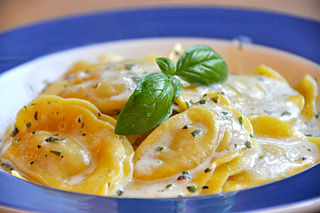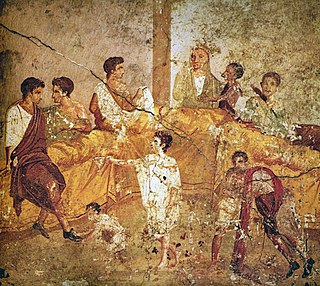Gillian Riley is an English food writer.
Gillian Riley is an English food writer.
She was born 1933 [1] and brought up in Yorkshire, read History at Cambridge University. After obtaining a diploma in education, she went to live in London where she worked as a designer in print and publishing, combining this with part-time teaching. Study trips to Italy in pursuit of lettering and inscriptions fuelled a passion for the history of Italian gastronomy which gradually took over her life. Her illustrated translation of Giacomo Castelvetro's The Fruit, Herbs & Vegetables of Italy was published by Viking Penguin in 1989, and in paperback, text only, by Prospect Books in 2012. Then followed three titles in the Painters & Food series for Pomegranate Books: Renaissance Recipes, Impressionist Picnics, and The Dutch Table. A ''Feast for the Eyes, the National Gallery Cookbook, involved the lateral thinking needed to use art to illuminate the story of food, and food to shed light on hitherto ignored aspects of painting. Food in Art, Reaktion Books 2015, covers earliest times to the Renaissance. The Oxford Companion to Italian Food, OUP 2007 describes contemporary Italian food in its historic background. She is currently[ when? ] working on a biography of Ulisse Aldrovandi, the sixteenth century naturalist.

A pie is a baked dish which is usually made of a pastry dough casing that contains a filling of various sweet or savoury ingredients. Sweet pies may be filled with fruit, nuts, fruit preserves, brown sugar, sweetened vegetables, or with thicker fillings based on eggs and dairy. Savoury pies may be filled with meat, eggs and cheese or a mixture of meat and vegetables.

The cuisine of ancient Rome changed greatly over the duration of the civilization's existence. Dietary habits were affected by the political changes from kingdom to republic to empire, and Roman trading with foreigners along with the empire's enormous expansion exposed Romans to many new foods, provincial culinary habits and cooking methods.

Carbonara is a pasta dish made with eggs, hard cheese, cured pork, and black pepper. The dish took its modern form and name in the middle of the 20th century.

Ravioli are a type of pasta comprising a filling enveloped in thin pasta dough. Usually served in broth or with a sauce, they originated as a traditional food in Italian cuisine. Ravioli are commonly square, though other forms are also used, including circular and semi-circular (mezzelune).

Peperoncino is the generic Italian name for hot chili peppers, specifically some regional cultivars of the species Capsicum annuum and C. frutescens. The sweet pepper is called peperone in Italian. Like most peppers, the fruit is green or yellowish-green when young, and ripens to a red color.

Jane Grigson was an English cookery writer. In the latter part of the 20th century she was the author of the food column for The Observer and wrote numerous books about European cuisines and traditional British dishes. Her work proved influential in promoting British food.
Anglo-Indian cuisine is the cuisine that developed during the British Raj in India. The cuisine introduced dishes such as kedgeree, mulligatawny and pish pash to English palates. One of the few Anglo-Indian foods that has had a lasting impact on English cuisine is chutney.

Arab cuisine is the cuisine of the Arabs, defined as the various regional cuisines spanning the Arab world, from the Maghreb to the Fertile Crescent and the Arabian Peninsula. These cuisines are centuries old and reflect the culture of trading in baharat (spices), herbs, and foods. The regions have many similarities, but also unique traditions. They have also been influenced by climate, cultivation, and mutual commerce.

Frittata is an egg-based Italian dish similar to an omelette or crustless quiche or scrambled eggs, enriched with additional ingredients such as meats, cheeses, or vegetables. The word frittata is Italian and roughly translates to "fried".
Armenian cuisine includes the foods and cooking techniques of the Armenian people and traditional Armenian foods and dishes. The cuisine reflects the history and geography where Armenians have lived as well as sharing outside influences from European and Levantine cuisines. The cuisine also reflects the traditional crops and animals grown and raised in Armenian-populated areas.

The Oxford Symposium on Food & Cookery is an annual weekend conference at which academics, food writers, cooks, and others with an interest in food and culture meet to discuss current issues in food studies and food history.

Caspian cuisine is a regional cuisine found in Northern Iran, primarily found in the Mazandaran, Gilan, Alborz, and Golestan provinces. The recipes are diverse, just like the region's landscape. Nature in the Mazandaran region of Iran is distinct and varied sections with a mixture of coastal, plains, prairies, forests, and rainforests. The Mazandarani cuisine of coastal regions is very different from that of mountainous regions since people settled in the Alborz usually use the indigenous herbs, while coastal populations prepare dishes using local fish and Caspian (Mazani) rice with vegetables.

Arugula or rocket is an edible annual plant in the family Brassicaceae used as a leaf vegetable for its fresh, tart, bitter, and peppery flavor. Its other common names include garden rocket, and eruca. It is also called "ruchetta", "rucola", "rucoli", "rugula", "colewort", and "roquette." E. vesicaria, which is widely popular as a salad vegetable, is a species of Eruca native to the Mediterranean region.

A Mont Blanc is a dessert of sweetened chestnut purée in the form of vermicelli, topped with whipped cream. It was created in nineteenth-century Paris. The name comes from Mont Blanc, as the dish resembles a snow-capped mountain.

Giacomo Castelvetro was an Italian expatriate in Europe and England, humanist, teacher and travel writer.

Salmoriglio is a southern Italian condiment made of lemon juice, olive oil, garlic, salt, and herbs. It is common in Sicily and Calabria as an accompaniment to seafoods or meats, especially swordfish.
Elizabeth David, the British cookery writer, published eight books in the 34 years between 1950 and 1984; the last was issued eight years before her death. After David's death, her literary executor, Jill Norman, supervised the publication of eight more books, drawing on David's unpublished manuscripts and research and on her published writings for books and magazines.

Food and dining in the ancient Rome reflect both the variety of food-stuffs available through the expanded trade networks of the Roman Empire and the traditions of conviviality from ancient Rome's earliest times, inherited in part from the Greeks and Etruscans. In contrast to the Greek symposium, which was primarily a drinking party, the equivalent social institution of the Roman convivium was focused on food. Banqueting played a major role in Rome's communal religion. Maintaining the food supply to the city of Rome had become a major political issue in the late Republic, and continued to be one of the main ways the emperor expressed his relationship to the Roman people and established his role as a benefactor. Roman food vendors and farmers' markets sold meats, fish, cheeses, produce, olive oil and spices; and pubs, bars, inns and food stalls sold prepared food.

Sharbat is a drink prepared from fruit or flower petals. It is a sweet cordial, and usually served chilled. It can be served in concentrated form and eaten with a spoon or diluted with water to create the drink.

Anchovy paste is a fish paste food product prepared using anchovies as a primary ingredient. It is used as a condiment and as an ingredient in various dishes, such as Scotch woodcock, and is a mass-produced product. It has been used for centuries to provide flavor to foods and as a source of nutrients, and it is a part of the cuisines of Great Britain, Italy, the Philippines and Vietnam. It is a major export product of Morocco.